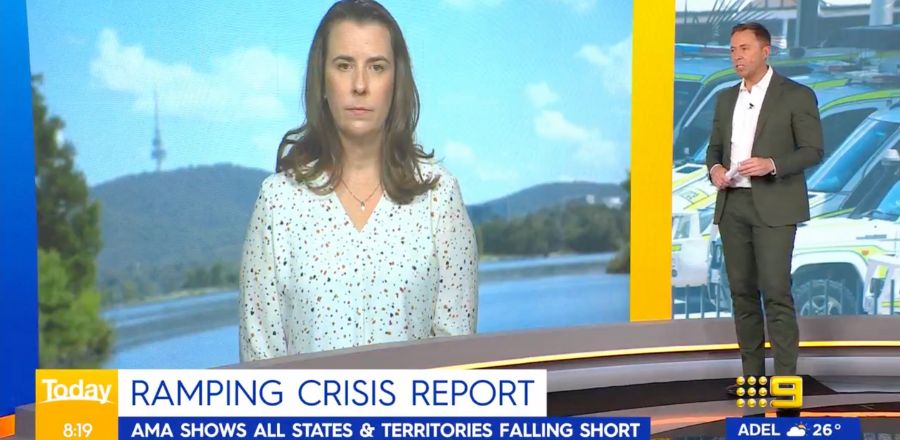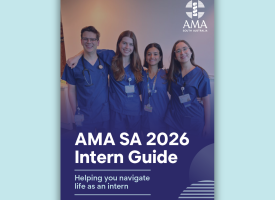Ambulance Ramping Report Card - Dr Danielle McMullen on Weekend Today
Transcript: AMA Vice President, Dr Danielle McMullen, Weekend Today
Subject: Hospital Ramping Report Card

Question: There is new evidence this morning suggesting the country’s ambulance ramping crisis has now escalated, with the Australian Medical Association revealing all states and territories are failing to meet safe standards. Pressure now mounting on state governments to act, and act quickly, before more lives are put at risk. We’re joined this morning by AMA Vice-President Dr Danielle McMullen in Canberra. Danielle, thank you so much for your time. Look, it isn’t a new problem, is it? For those at home who might not know, in simple terms, what is ambulance ramping?
DANIELLE MCMULLEN: So, ambulance ramping is the term we use when hospitals are so overcrowded and overburdened that people who are unwell enough to be in an ambulance on the way to hospital can’t get out of that ambulance at the other end. And so that person who is unwell and the ambulance looking after them are stuck, literally on the ramp of the emergency department, waiting for a bed inside that ED and that definitive care that the patient needs.
Question: We’ll get to a horrible story out of Queensland very shortly, but what states or territories are worst?
DANIELLE MCMULLEN: Unfortunately, we’re seeing problems across the entire country and no state or territory has met their targets for ambulance offloads. Across the country the reporting is really different, which makes it quite difficult to compare. But as you’ll see there, in Queensland where we’ve seen that terrible case this week, there’s less than 60 per cent of people are offloaded within 30 minutes and we see more than 134,000 hours of ambulance ramping in a year. And I think that’s a figure that should shock us all, and unfortunately the statistics are similar or worse around the country.
Reporter: So, does the data tell you why public hospitals are struggling? What are your thoughts on why they might be impacted?
Question: So, we know there’s a number of reasons hospitals are struggling. Our hospitals are in logjam. Emergency departments have difficulty getting patients who need admission into the hospital, into those ward beds, because it’s hard to get them out on the other end, and so that closed loop is not moving as quickly as it needs to, and our hospitals are under-resourced. The staff are doing the best they can to get people the care they need but they desperately need more resourcing, more space, more beds and a system that works for our patients out in the community.
Question: We know in states like South Australia, the Premier there made a promise before the election to fix it, he made it a real priority. More nationwide, do you worry that this will get worse before it gets better?
DANIELLE MCMULLEN: I certainly hope it doesn’t get worse. Australians can’t afford for it to get worse. We’re seeing shocking numbers around the country, and we do know that a number of states and territories are taking this seriously, and so the optimist in me looks forward to next year’s figures and the hope that they will be turning around. But we need an urgent, nationally coordinated solution to this. There does need to be some urgent funding to stop this in its tracks and the National Hospital Funding Agreement needs to look at the Commonwealth Government putting in their fair share at 50 per cent of hospital funding and other reforms, to make sure that hospitals can flow, people can get off of those ambulance trolleys, ambulances can be back out in the community where they’re needed most, and we can keep people safe and get them the care they need.



